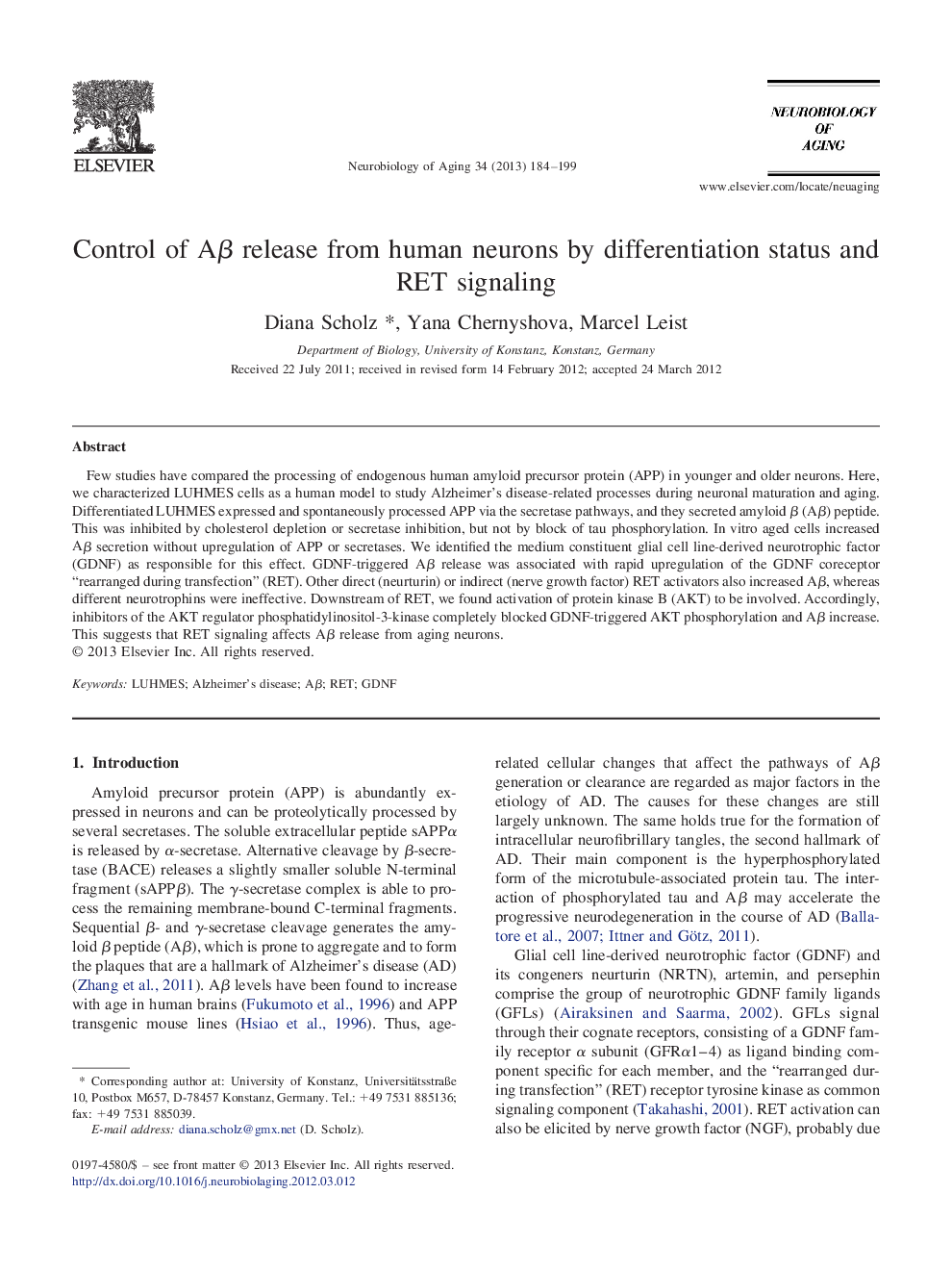| Article ID | Journal | Published Year | Pages | File Type |
|---|---|---|---|---|
| 6807943 | Neurobiology of Aging | 2013 | 16 Pages |
Abstract
Few studies have compared the processing of endogenous human amyloid precursor protein (APP) in younger and older neurons. Here, we characterized LUHMES cells as a human model to study Alzheimer's disease-related processes during neuronal maturation and aging. Differentiated LUHMES expressed and spontaneously processed APP via the secretase pathways, and they secreted amyloid β (Aβ) peptide. This was inhibited by cholesterol depletion or secretase inhibition, but not by block of tau phosphorylation. In vitro aged cells increased Aβ secretion without upregulation of APP or secretases. We identified the medium constituent glial cell line-derived neurotrophic factor (GDNF) as responsible for this effect. GDNF-triggered Aβ release was associated with rapid upregulation of the GDNF coreceptor “rearranged during transfection” (RET). Other direct (neurturin) or indirect (nerve growth factor) RET activators also increased Aβ, whereas different neurotrophins were ineffective. Downstream of RET, we found activation of protein kinase B (AKT) to be involved. Accordingly, inhibitors of the AKT regulator phosphatidylinositol-3-kinase completely blocked GDNF-triggered AKT phosphorylation and Aβ increase. This suggests that RET signaling affects Aβ release from aging neurons.
Keywords
Related Topics
Life Sciences
Biochemistry, Genetics and Molecular Biology
Ageing
Authors
Diana Scholz, Yana Chernyshova, Marcel Leist,
